Just
like the "Joker of the Month" in the Jokers section we will select a
"Deck of the Month" from all the decks that we could add to our
collection during that month. It will be what we consider our best find. We've
started this section in April 2007 and without any doubt we can say here that
over the years there will be antique, vintage and modern decks shown on these
pages. Age, design and value of the chosen decks may be very different each
time.
December
2025
|
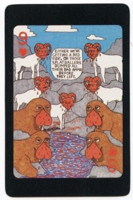 |
|
|
Mid
December I received an unusual question from a fellow collector. I
usually show the best find here, but sometimes I have to find one in the
collection. The question was if I had a deck which I considered the
worst in the collection and this deck immediately sprang to mind. So I
looked it up and found that it had it's merits too. It
wasn't an easy decision |
but........here
it is!
I show this card here to illustrate my decision. I consider it the worst
designed card, because it's such a clumsy attempt to combine broad
designs with a narrow card and not all the cards are centered well. But
on the bright side: it's an artist designed transformation deck...
with a signed ace! |
After
I had found the deck I looked up Miriam's fiche and Amerika #352 showed that we
had in fact received the deck as a gift in October 2002. We had ordered 5 decks from
the artist and only had to pay for 4, which we sold here in the Netherlands. But
Miriam had also noted that it was published as "Cardoons - SF Fantasy Poker
Deck". The artist, who created the designs for the deck, goes by the name
E. Michael Blake and he was nice enough to sign the ace of diamonds for me, as
asked. It was the first "signed deck" in our collection, which grew
over the years as a much appreciated sub-collection. And because it also was the
first time that I was in direct contact with the artist, I forgot to ask all the
important questions: printer, number and date?!
Michael copyrighted his back design in 1996 (see bottom), but if I remember well
it took a few years before the deck was actually published.
At
that time we didn't have any antique transformation decks yet, but only a few modern
ones, like the wonderful
"Key to the Kingdom". Creating a transformation deck requires a vivid
imagination. When we met Bob Lancaster during the 2000 convention in New Haven,
he showed us his designs for a few cards but complained about the lack of
inspiration and finding the suit shapes in the world around him. He never
finished his project, probably because he wasn't good in drawing and had used photo's for
his designs. But I've also asked Linnea Gits (Uusi Studio) twice if she would be interested to create
a transformation deck, alas without success.
So I cherish contemporary artists, who venture into this special field,
especially Elaine Lewis, who has produced a good
number of transformation decks, all with different themes. But in this deck
Michael Blake combines the designs as illustration for his own humorous texts.
His style reminded me of some of the underground comics I once had. To keep the
texts readable I've enlarged the scans a bit.
The usual black background here make it easier to forget the black borders and
concentrate on the actual cards. It's apparent that the dimensions of Blake's
designs don't match those of a standard wide card. That's a designer's
fault with consequences. I don't know his exact ideas about how to solve this,
but can imagine that an alternative was to adapt the size of the original
designs. Maybe that was not possible without compromising the design, especially
on the pip cards, and has lead him to this rather unaesthetic solution. But
Blake can't be held responsible for the sometimes off center designs. That's the
printer's doing. Still, I hope you can enjoy the original designs and appreciate
his humor. Blake was nevertheless proud enough of his work to sign all the
courts and a lot of pips with his initials EMB.
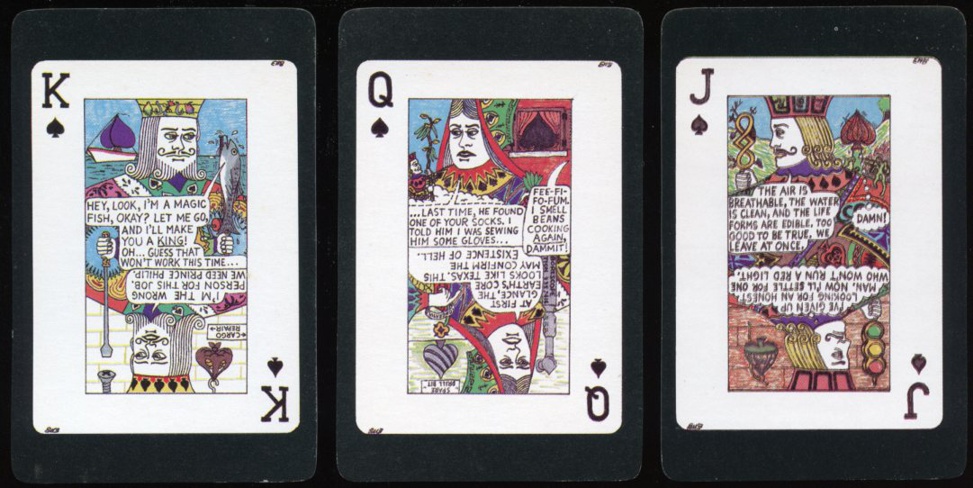
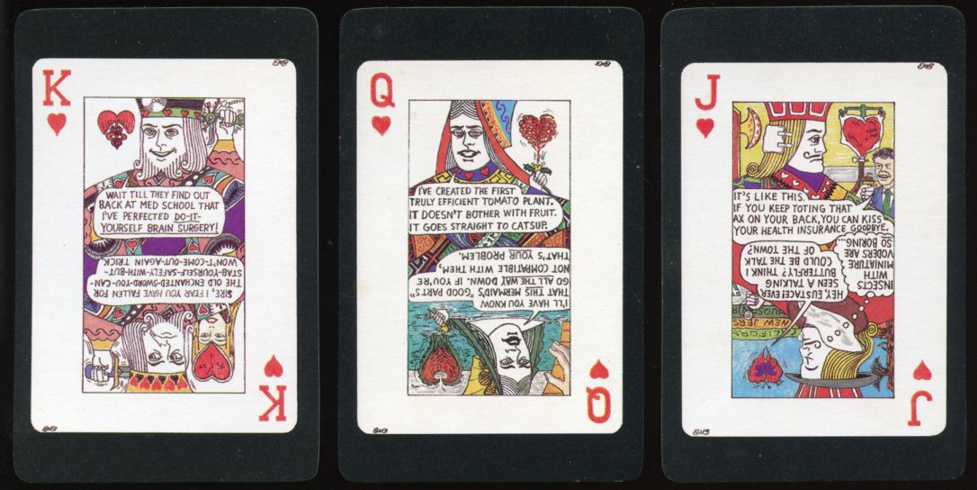
CLICK THE ACE TO SEE
ALL THE PIPS OF THAT SUIT.
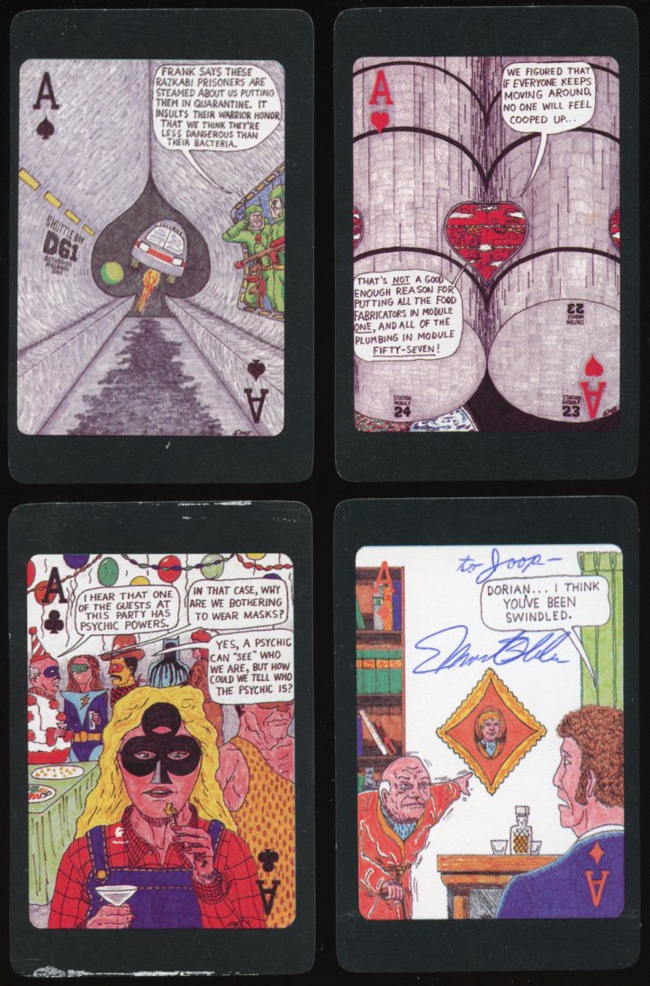
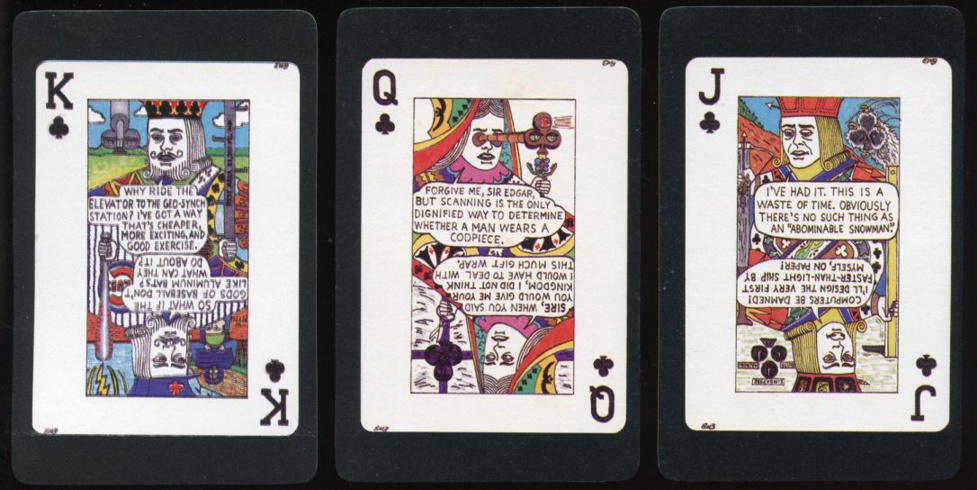
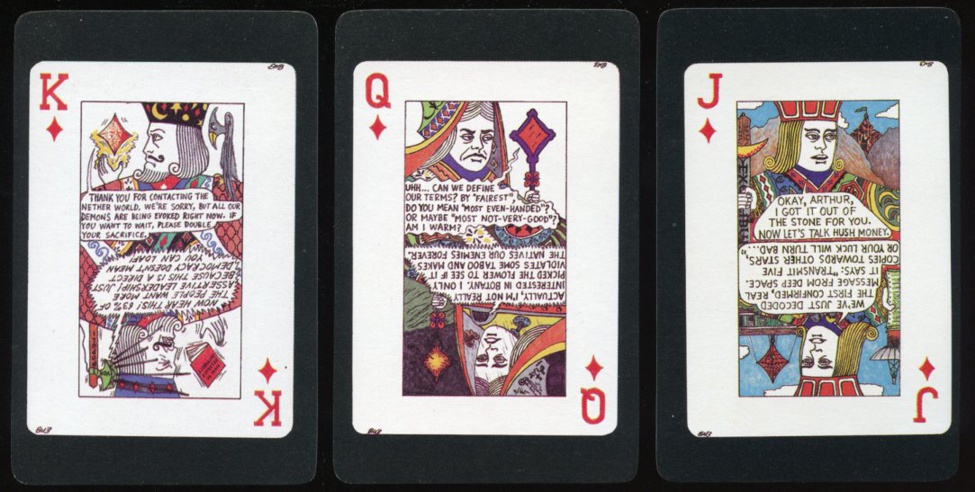
|
|
|
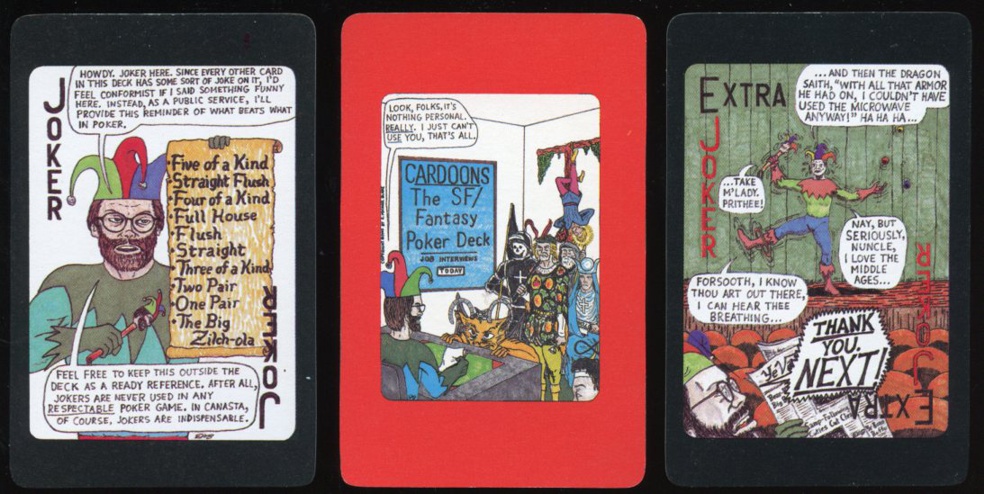
|
|
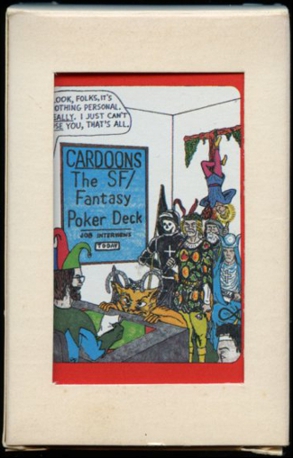
|

"Copyright © 1996 by E.
Michael Blake"
On both jokers and the back design E. Michael Blake has drawn a self portrait of himself
with a joker hat.
The box is a simple
blank box with a window on one side.
|
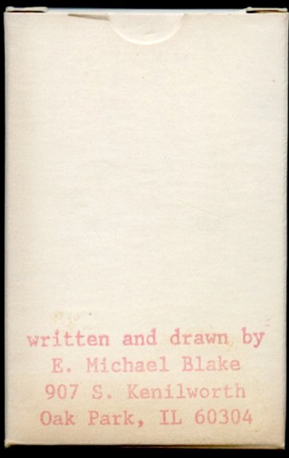
|








